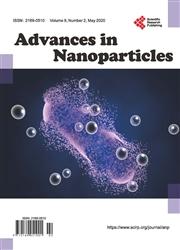A New and Original Method to Produce Ca(OH)2 Nanoparticles by Using an Anion Exchange Resin
引用次数: 33
Abstract
Ca(OH)2 nanoparticles in hydro-alcoholic dispersion (nanolime) were successfully employed in Cultural Heritage conservation, thanks to the ability to overcome the limiting aspects of traditional lime treatments. Nanolime were currently produced by chemical precipitation process, at high temperature, with long times of synthesis, and after several purification steps to remove undesired secondary phases. In this paper, an innovative, simple and original method for nanolime production was described. The method was based on an ion exchange process between an anionic resin and a calcium chloride aqueous solution, operating at room temperature. A pure Ca(OH)2 nanoparticles suspension can be rapidly obtained after separating the resin from suspension, and any purification step was necessary. The exhausted resins can be regenerated and reused for a cyclic nanolime production. Structural and morphological features of the produced nanolime were preliminarily characterized by X-ray diffraction (XRD) and transmission electron microscopy (TEM). Moreover, XRD measurements allowed estimating nanoparticles reactivity by following their carbonatation process in air, in relation to different water/alcohol ratios and medium or high relative humidity conditions. The produced Ca(OH)2 nanoparticles appeared hexagonally plated, with dimension less than 100 nm and, compared with those obtained by typical wet precipitation method, they proved to be more reactive.利用阴离子交换树脂制备纳米Ca(OH)2的新方法
由于能够克服传统石灰处理的局限性,水酒精分散体中的Ca(OH)2纳米颗粒(纳米石灰)成功地应用于文化遗产保护。目前制备纳米粒的方法主要是化学沉淀法,需要较高的温度,较长的合成时间,并且需要经过多次纯化以去除不需要的二次相。本文介绍了一种新颖、简单、新颖的纳米粒生产方法。该方法是基于阴离子树脂和氯化钙水溶液之间的离子交换过程,在室温下操作。树脂与悬浮液分离后,可快速得到纯净的Ca(OH)2纳米颗粒悬浮液,无需任何纯化步骤。耗尽的树脂可以再生和重复使用,用于循环纳米粒生产。采用x射线衍射仪(XRD)和透射电镜(TEM)对所制纳米粒的结构和形态特征进行了初步表征。此外,XRD测量可以通过跟踪纳米颗粒在空气中的碳酸化过程,以及不同的水/醇比和中或高相对湿度条件来估计纳米颗粒的反应性。制备的Ca(OH)2纳米粒子呈六边形电镀,尺寸小于100 nm,与传统湿沉淀法制备的纳米粒子相比,活性更强。
本文章由计算机程序翻译,如有差异,请以英文原文为准。
求助全文
约1分钟内获得全文
求助全文

 求助内容:
求助内容: 应助结果提醒方式:
应助结果提醒方式:


